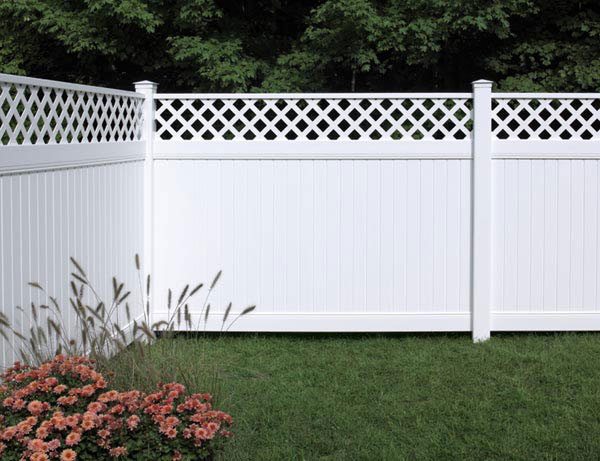Plastic fencing has been available for some 30 years in the United States even if take-up in the UK has been slower. The main reason was cost – plastic fencing has been more expensive than traditional wood, although prices now are comparable.
No need to be an Eyesore
Plastic fencing can be manufactured in so many forms that there’s no real reason for it to look out of place, regardless of its location. Indeed, some plastic designs could even improve the appearance of a garden or other area.
Plastic fencing offers a number of benefits compared to traditional wood.
Low Maintenance
Once it’s up, plastic or UPVC fencing might only need the occasional wipe down with warm soapy water. Wood, on the other hand, will require regular repainting or staining and some or all will require replacement as the wood succumbs to deterioration over time such as rotting.
The lower maintenance of UPVC also offsets the possible lower initial purchase price of wood as no further money is being spent during the lifetime of the fence.
Ease of Installation
UPVC fencing is straightforward to install, and this is made easier as there’s no need to initially paint, stain or seal it unlike wood.
Long Life
UPVC fencing should outlast wood and all the time it’s up will require a modicum of attention. Wood fences will have been repainted or stained several times not to mention the likely ‘spot repairs’ of panels and maybe whole sections.
Durability
going hand in hand with ‘long life’ above, plastic fencing won’t crack, sag, peel or blister. Ironically, this makes UPVC fencing likely to be less of a potential eyesore than a poorly maintained wooden fence in the fullness of time.
For example, a warped panel fence discoloured with moss can make a whole garden area look somewhat tired and dishevelled. Compare this to UPVC fencing panels that should retain their appearance year after year.
Safety
UPVC fences score heavily here. The lack of potential splinters or jagged and sharp pieces of wood breaking off make them less hazardous.
It’s less flammable than wood, too, and isn’t susceptible to insect infestation that could impair the strength of the material as in the case of wood.
Style Options
plastic fencing can be produced in a variety of different styles so can blend in with the rest of the property’s look and that of the surrounding area or neighbourhood.
Practical benefits
in the case of fences used in farming, a great advantage of UPVC is its insulation properties. This comes in very useful with electric fencing as the plastic fence posts don’t conduct the power; this makes the fence more effective as the current is restricted to running along the horizontal sections of the fence whether wire or rigid lengths.
Costs and appearances can be Deceptive
Ironically, the two perceived disadvantages of UPVC fence panels are in reality key strengths when compared to wooden fences. Over a period of time, UPVC fencing should prove less expensive than wood due to negligible maintenance costs.
The ‘eyesore’ agreement is actually reversed as, along with the availability of all types of design to suit the setting, they keep their appearance over a period of time where wood can deteriorate without ongoing care and attention.
Tim White is the director of Hybrid Fencing from in Billericay, Essex, and specialises in supplying and installing hybrid fencing.
